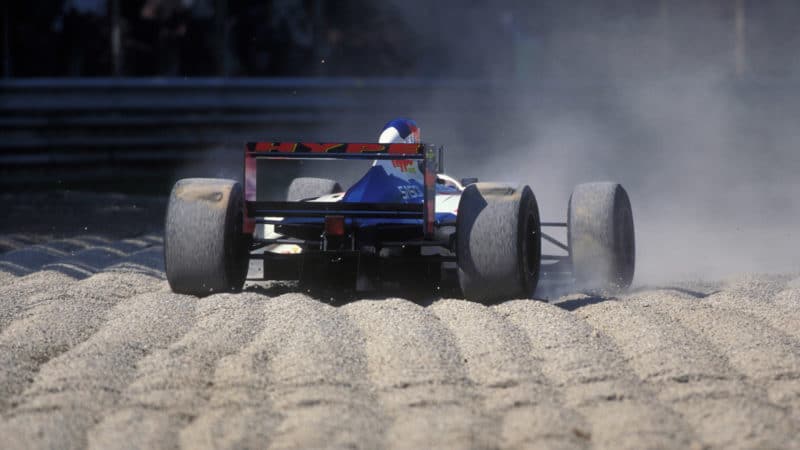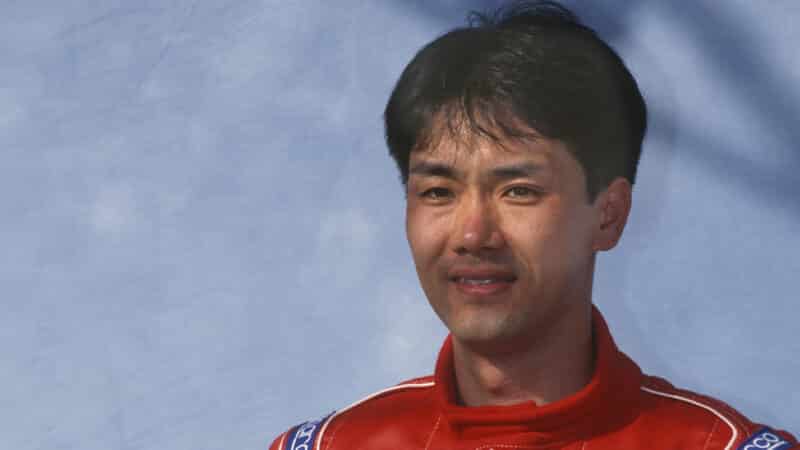After the season – which brought no success but at least gave Taki valuable single-seater experience – he returned to Japan to prepare for a bold step up to British F3. But his career again hit a speed bump: “I couldn’t find any sponsorship so I was sitting around like a lemon for 20 months.”
Finally he found a seat in Japanese F3. “In 1990, before my first race at Suzuka I shunted coming out of the ‘esses’ and didn’t qualify as usual. All the sponsors arrived shortly afterwards, it was a nightmare.”
Taki’s form did improve over the next few seasons in Japan, scoring a couple of fourths in 1992. However, he admits, “to be honest with you, it happened by chance. Two or three cars were disqualified due to technical problems. I think in one race Jacques Villeneuve’s car was 200g lighter than the minimum weight.”
1994 saw Taki return to David Sears’ outfit for European F3. He scored no points that year but his sponsorship portfolio was growing and F1 teams took note. At the end of the year, after only 20 laps of testing at Barcelona, he made his debut at Suzuka with the struggling Simtek outfit.
It was an inauspicious start. While the huge downpour that day set the scene for Damon Hill’s greatest drive, at the back Taki was struggling. After qualifying 26th and last, he lost fifth and sixth gears at the start before aquaplaning into the pitwall on lap three. “The car felt so bad,” he says, “and it was a good thing I crashed early on because I didn’t even know what the pitstop procedure was.”

Inoue in the gravel at Monza ’95
Grand Prix Photo
Switching to Footwork for 1995, Taki’s woes were magnified. He failed to score a point all year, his best finish being eighth at Monza, where he inadvertently caused the famous Hill/Schumacher clash. “Damon followed me then got back on his line just behind Michael, but it was too late to brake. Oh shit!”
His notoriety was firmly established well before then. After a qualifying session at Monaco, he was rear-ended by Jean Ragnotti in the safety car. The Footwork flipped and Taki was left with a concussion. Then, at the Hungaroring, he pulled over with a blown engine. As he fetched a fire extinguisher he was hit by the medical car, this time suffering a broken leg. It was a shambolic end to a weekend where he had out-qualified team-mate Max Papis for the first time. “I believe he had some technical problems,” explains Taki.
The year ended at Adelaide with another spin into retirement while Gianni Morbidelli took advantage of high attrition to finish third in the sister car. Taki signed with Minardi for 1996 but when his sponsors disappeared he was out on his ear. He dabbled unsuccessfully in sports cars, but his racing career was effectively over.
Taki Inoue’s legacy might be the butt of a few jokes – mostly his own – but the lesson here is that even if a driver makes it to F1 riding a budget rather than talent, they won’t have coasted their way to the top. Everyone’s got the same goal, but there are very different ways to achieve it; that’s the way it’s always been and it’s not likely to change.


